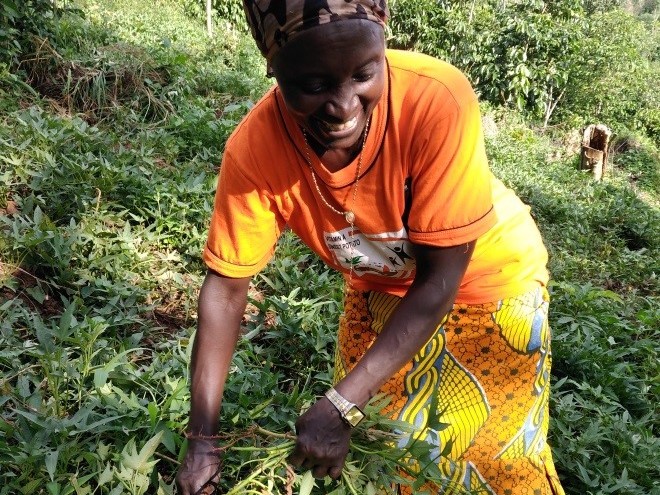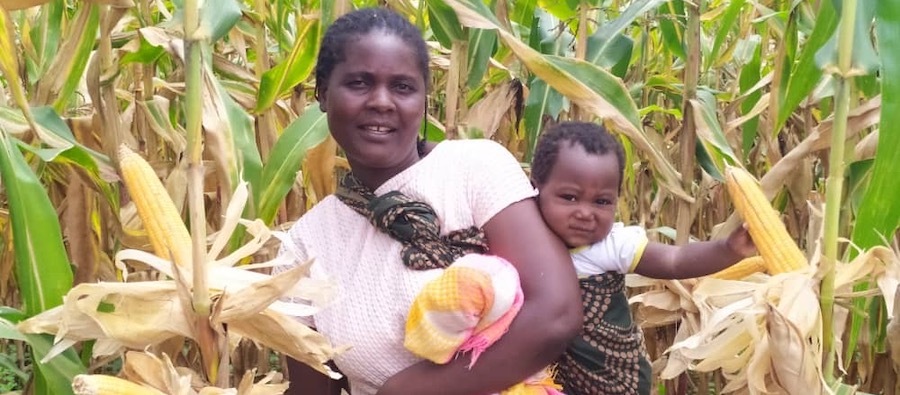Lynn Brown, Director of Alliances and Policy at HarvestPlusLynn Brown explores the importance of strengthening nutrition resilience amongst vulnerable populations to protect against future food system and income shocks. A version of this article originally appeared on Devex.
Building resilience is a priority across multiple global development sectors, including health, climate adaptation, disaster preparedness, livelihoods, and more.
But relatively little attention has been paid to nutrition resilience – more specifically micronutrient resilience. This is the ability to withstand dietary diversity shocks, without suffering impaired growth or increased morbidity, and is critical to immediate and long-term human well-being.
Discussions around nutrition in crisis situations typically focus on ways to address acute malnutrition through short-term nutrition responses. But with the onset of the Covid-19 pandemic, significant disruptions to food systems have increased the global focus on the ongoing resilience of these systems.
Micronutrient resilience deserves more attention in this context. Its absence during shocks leads to spikes in serious health problems linked to micronutrient deficiency, including stunting, anaemia and compromised immunity, which can lead to irreversible damage to human physical and cognitive development.
Aligning nutritional priorities
Dietary diversity is widely accepted as the gold-standard approach to positive nutrition and health outcomes.
The overriding focus for the nutrition community is on increasing availability and lowering costs of higher-micronutrient quality foods, such as fruits, vegetables and animal source foods. Meanwhile, agricultural research and breeding programmes tend to centre around increasing staple crop yields by prioritising climate-smart, drought-tolerant, and pest- and disease-resistant varieties over specific nutrition traits.

Micronutrient resilience is critical to immediate and long-term well-being.
Photo credit: HarvestPlus
The impact of Covid-19 has revealed the costs of this divided food and nutrition strategy. The reality is that shocks lead to reduced consumer incomes, which force changes in food consumption patterns. This usually involves a shift from eating higher-nutrient foods to relatively less expensive, but also less nutritious, staples.
One possible solution could be to increase supplementation coverage for micronutrient-vulnerable populations. But launching new supplementation campaigns may be challenging in the short run, and Covid-19 has shown the vulnerability of existing programmes to lockdowns and supply disruptions.
Another option is expanding the coverage of industrial fortification, which increases the micronutrient content of staple grains and oils with additives after harvest and before retail. However, this sector has faced similar logistical challenges during COVID-19, with some countries waiving industrial food fortification requirements and thereby compromising consumer access to micronutrients.
Enriching staple crops through biofortification
The Covid-19 crisis underlines the strengths of a practical, proven response to this micronutrient challenge: increasing the intrinsic micronutrient content of staple foods themselves, rather than through additives.
To achieve this, agricultural breeding goals need to include a focus on nutritional content of key crops. Biofortification – the nutritional enrichment of crops through plant breeding – is based on the same breeding techniques used to increase climate responsiveness and pest or disease resistance.
This approach delivers micronutrients to vulnerable rural populations in the foods they grow and eat every day. It also builds their nutritional resilience, as the micronutrients come at no extra cost and stay in their crops, harvest after harvest. So, when incomes are affected in times of crisis, key micronutrients remain available.

Dietary diversity is important for positive nutrition and health outcomes.
Photo credit: HarvestPlus
This scientifically-proven technology, developed and promoted by CGIAR and led by its HarvestPlus programme, is already reaching around 50 million people in smallholder farming families with biofortified, nutritionally enriched staple foods.
Promoting nutritional enhancement of staple crops, along with dietary diversification, industrial fortification and supplementation for at-risk groups, puts a healthy, diversified and nutritious diet within reach for more people. For instance, if all the wheat consumed in Pakistan’s Punjab province was zinc-enriched, the cost of a nutritious diet for an adolescent girl would fall by 25 per cent.
Hundreds of varieties of nutritionally enriched staple foods – bred to be one-for-one replacements for common non-biofortified varieties – have already been released. Not only do biofortified versions provide more nutrition, but they also have other agronomic traits that are important to farmers, typically yielding as much or more under the same growing conditions as their current non-biofortified varieties.
Advancing micronutrient resilience
Yet biofortified crop varieties tend to be seen as additional or niche rather than as replacements for non-biofortified varieties. Governments can help change this by encouraging the widespread adoption of nutritionally enriched staple crop varieties and guaranteeing that official support or policies do not discriminate against biofortified varieties by exclusion.
The 2020 ‘State of Food Security and Nutrition in the World’ report revealed that 3 billion people cannot afford a nutritionally adequate diet – and that was before the Covid-19 crisis hit.
Nutritionally enriching staple crops through biofortification is an evidence-based, practical approach to increasing the level of micronutrients in the most resilient part of the food system, helping vulnerable people become more resilient to income and food system shocks.



